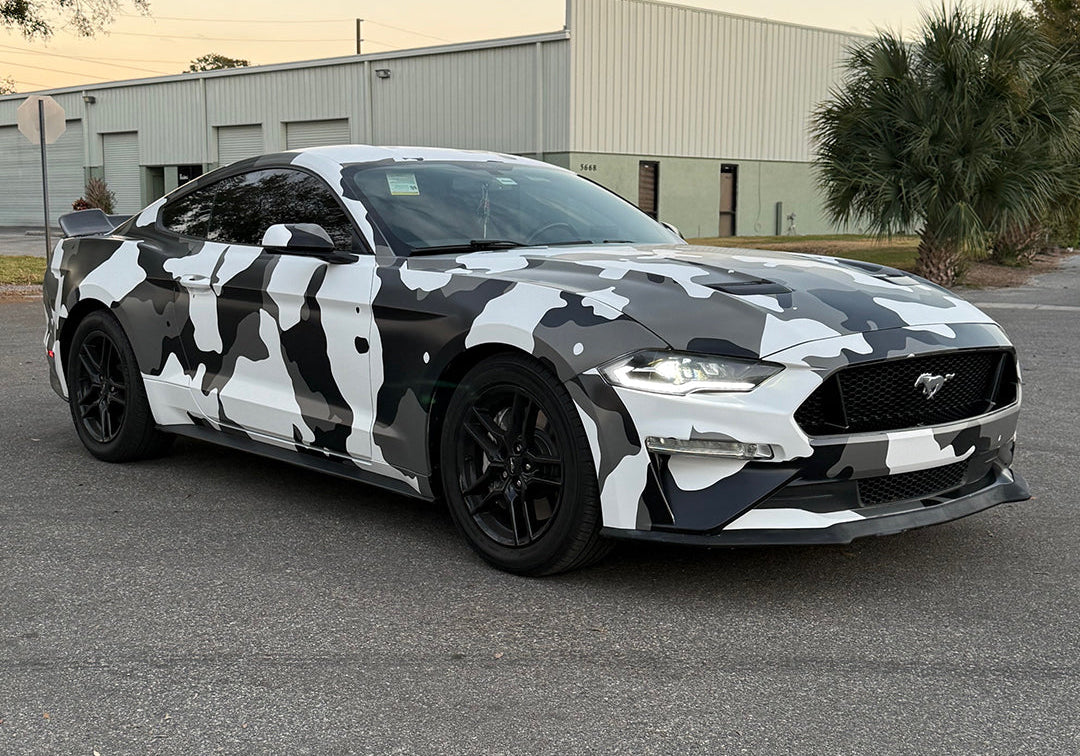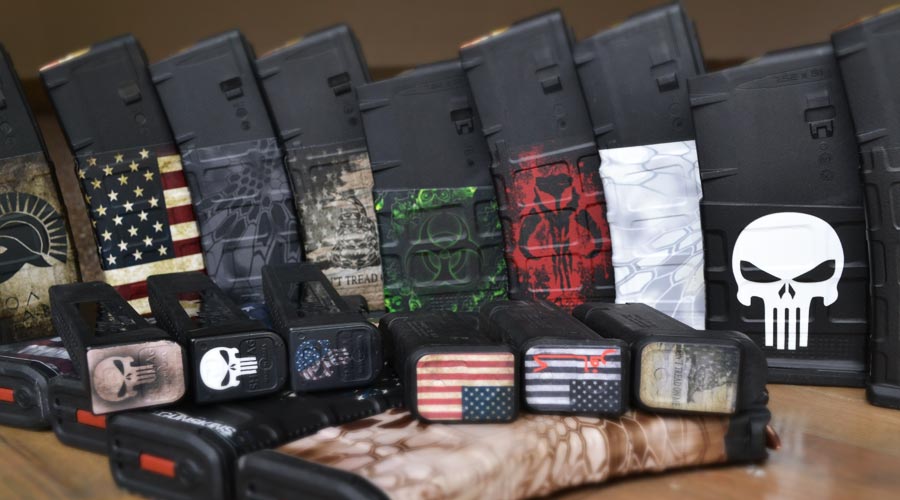You’ve decided to hit the trail and chase down that big buck that’s been tormenting you over the last few years. Your gear is ready. Your gun is ready. But are you ready?
You wouldn’t head out on the hunt in your blue jeans and t-shirt. Camouflage is the best solution for staying hidden in those crucial moments. But which camo is best for you and your hunting goals?
With so many options of camo on the market today, it’s easy to get overwhelmed when choosing the best option for hunting season. To start off, let’s break down what makes good camo so you can separate the what from the chaff.
What Makes Good Camo
The purpose of camo is simple: to make you invisible to the game you’re chasing. But how does it accomplish that?
Effective camouflage uses the colors and patterns of nature to create clothing and gear that helps you blend in to your environment.
This is where it can get complicated. A camouflage that works perfectly in the woods of Northern California may stand out and struggle in the woods of Georgia based on the colors and shapes from these regions.
Colors
We all know that green isn’t simply just green. There’s an vast range of colors in nature. Many hunters able to identify the difference in species of trees or crops simply from their color. Deer, bear, bore, elk, and other game can identify that your camo doesn’t belong even more quickly than you.
In each environment you can hunt in, there are endless possibilities for color combinations that will help you camouflage effectively. For example: A tan grassy field could be darker or lighter in overall shade. During dusk, the light may turn normally dark browns a dusty golden color. Grasses and trees may turn an bright emerald. Conversely, that same tan grassy field will turn a dark shade of brown in the evening. Weather such as rain can also affect the colors of your hunting environment.
As a hunter searching for the perfect camo, it’s important to watch, understand, and take pictures of the land during the hunting season. Consider all of the factors affect what kind of colors you’ll need, such as time of day and weather conditions.
Pattern
The woods will look very different from an open field, which looks very different from a marsh.
Grass is commonly found across the U.S. in many different hunting environments, and it is a big focus in most camouflage patterns. In many hunting situations, you will find yourself tucked up on the ground near a tree, bush, or tall grass.
For wooded regions, camo will come covered in trees, branches, and leaves. When in a woods or forest, downed trees are common, helping you blend in with the surroundings, with wooded camo remaining a great choice for tree stands.
Patterns play a major role in how effective camo will be, but often not in the way you’d expect. Camouflage can blend into nature without actually having any image of bark, trees, or grass–but the more realistic, the better.
Styles Of Camo
Choosing the right camo for your hunt is less about the game and more about the season and the region you’ll be hunting in.
Nature is a blend of trees, grass, bushes, fields, and other types of flora. Camouflage is often created with the characteristics to match your hunting terrain.
In many cases, camouflage is the starting point to a well-hidden hunter.
Waterfowl
A popular game across the Northern U.S. especially, waterfowl hunting involves hunting in fields, boats, grasslands, and marshes for duck and geese. Most common along the flyways and migrational routes between the U.S. and Canada, waterfowl camouflage is designed to be versatile across different terrains, with slight differences between patterns.
Waterfowl camo is usually designed with large grass stains or corn stalks in a range of tans and browns, mixed with thinner grasses, cattails, and hints of green.
During the opening days of duck season in the early fall, grasses are greener. For waterfowl hunting during this time of year, consider buying a light waterfowl jacket packed with more greens.
During the late fall, the grasslands begin to die off, and hunting picks up within the cornfields creating a need for a light tan, corn stalk-style camo. Consider buying a heavier jacket with this style of camo.
Waterfowl hunting continues into winter. Hunting in the snow creates a choice, is the snow so deep that you should switch to snow camo, or will the grass-style camo still be sufficient.
The Woods
From coast to coast, the hunt for big game pulls many hunters into the depths of the woods. This has caused the popularity of wooded camo not only in the closets of hunters but worn by the everyday person.
While hunters find themselves in the woods, the terrain and patterns found in Utah will differ widely from the woods in Florida.
Wooded camo has darker browns or brighter greens to match terrain and the “temperature” of your hunt. The temperature of the terrain refers to the darkness or brightness of the terrain at certain times of the year.
Wooded camo comes in high definition (HD) or blurred patterns. High definition camo creates photo-realistic images across your jackets and gear to blend in with nature. While this camo style works great when hunting in the woods, it looks out of place when used elsewhere. This is why the blurred style of camo was created; it’s more versatile and can be used in more environments. Here’s how.
Blurred Camo
Blurred camo or non-design camo focuses on the colors needed to blend into a given terrain, with broken patterns to help you blend in with a wide range of terrains.
Burred wooded camo uses the colors of the woods in an out-of-focus design, allowing the camo to blend it when used in the local grassland, woods, or other terrains.
This styling is used in modern digital camo, which uses many colors without patterns to blend into a wide range of terrains.
While these camo styles may not be the best in any given terrain, they work in a wide range of terrains. This is why they became popular with our military forces.
Snow and Winter
As the snow begins to fall, your standard green camo begins to stand out.
The snow covers the grass, and the trees lose their leaves for the season. Your camo needs to change. Winter camo can be purchased in a range, with some winter camo having a majority of trees and branches with white accents for heavily wooded areas, to other winter camos being white with some branches and twigs.
Get out there and determine which winter camo you need.
Brush and Stone
Tall thin grass and bushes cover some of the best hunting lands across the U.S. This terrain commonly matches up with stone, cliffs, and other open regions.
Brush and grassland camo uses thin grasses and blotched patterns to create a stone effect while being matched with blurred camo effects to create a universal pattern.
Orange
Each state has its own laws and regulations regarding Blaze Orange requirements. While some states require a solid piece of orange clothing to be worn, many states allow orange camo.
With patterns and breaking large flat spaces with texture being a key focus of camo, orange camo provides the required blaze orange protective wear while helping you blend in with your surroundings.
Your Gear
Now that you’re wrapped head to toe in camo jackets, pants, and hats, it’s time to take your gear to the next level with GunSkins wraps.
Forget the mismatched calls, guns, bows, and other gear. GunSkins can be applied at home whenever you want, helping you conveniently create one-of-a-kind gear for your hunt.
Wrapping your gear is one of the best ways to protect it, sealing away previous scratches and damage while adding a layer of armor to fight against future scratches.
GunSkins can be installed from the comfort of your home with a few easy steps and removed just as quickly when you decide to change your gears wrap. You can easily remove the old wrap by heating it with a heat gun or hairdryer.
Face Paint
With your gear and clothes taken care of, consider looking in a mirror.
The sun bouncing off your face could create a shiny, conspicuous surface, potentially giving away your position. Face paint doesn’t need to erase your features–it just needs to take away the shine and natural shadows of your face.
Utilize stripes, blotches, and other patterns when using face paint. Focus less on patterns and more on the colors being used to match your hunting terrain and camo.
The Perfect Camo
Camo can be the make or break for your hunting trip. When a pattern or color combo doesn’t work, you will stand out and grab the attention of your game.
Camouflage is just the beginning of disappearing into nature. Natural cover created by twigs, sticks, and grass being placed in front and around you will create layers of camo. Proper cover will mask your movements as you prepare for a shot.
Choosing the perfect camo is only the beginning. It’s now time to collect new clothes, gear and customize your old gear using GunSkins. Take your hunting experience to a new level as you create one-of-a-kind, durable hunting gear.
Sources
Geography of the United States of America thoughtco.com | ThoughtCo.com
Why Militaries Have Strange Pixelated Camo | BusinessInsider.com
Blaze Orange Hunting Requirements, by State (USA) | DSGOuterWear.com








